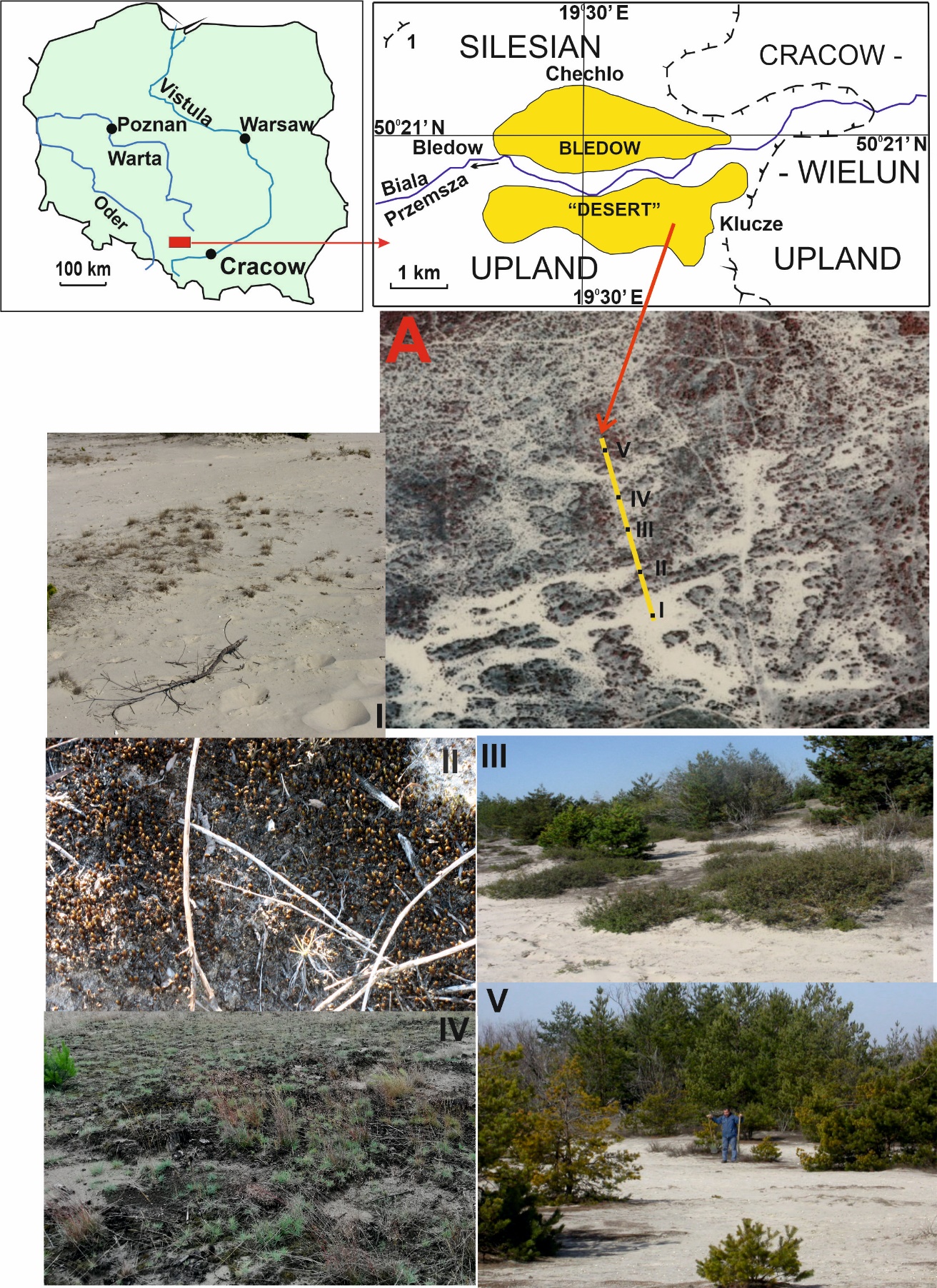Members of the “Ecosystems” team published in the journal “Land” the results of research on the processes of plant succession taking place on sands and their interpretation in terms of biomass growth. The study documented changes in aboveground and underground phytomass of plants and their impact on soil properties. Strict relations were also determined between the degree of stabilization of the sandy substrate and the encroachment of vegetation. Moreover, it was observed that in the initial stages of succession, terrestrial soil algae and bryophytes play an important role, as they initiate the formation of the humus level, giving rise to pedogenesis. As the plant succession progressed, changes in biomass increment and soil characteristics were found. The close relation between increased biomass and soil was confirmed in morphology and soil properties, especially in Corg, Nt, and Paval.
Rahmonov, O.; Skreczko, S.; Rahmonov, M. Changes in Soil Features and Phytomass during Vegetation Succession in Sandy Areas. Land 2021, 10, 265. https://doi.org/10.3390/land10030265

Figure 1. Location of the research area and the plots studied along the transect: (A) a fragment of the investigated area, with research plots in colour aerial photos; (I–V) general view of the plots

Figure 2. Relationships between biomass and soil features: A – the phytomass of dominant species in plots: P.p – Politrychym piliferum, C.c – Corynephorus canescens, S.ar. – Salix arenaria, K.g. – Koeleria glauca, S.ac. – Salix acutifolia, P.s. – Pinus sylvestris; B – soil profiles; C – contents of phosphorus in organic/humus horizons; D – the content of Corg., Nt in selected horizons; E – soil reaction in humus horizons (A).





